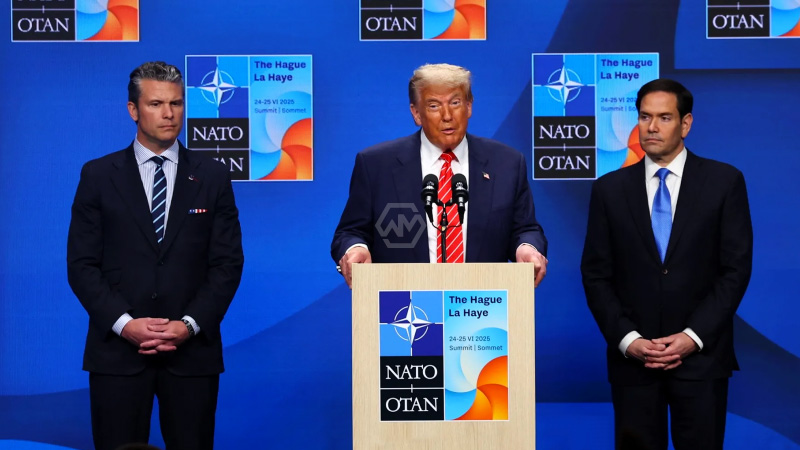- Trump-Zelensky meeting highlights a renewed push for Ukraine ceasefire talks.
- NATO nations agree to boost defense spending to 5% of GDP by 2035.
- Trump asserts leadership in brokering Israel-Iran ceasefire, warns of renewed tensions.
At the NATO summit in The Hague, U.S. President Donald Trump took center stage with a renewed call for peace in Ukraine, meeting with Ukrainian President Volodymyr Zelensky in what he called a “very nice” and “substantive” discussion.
Trump also revealed a phone call with Russian President Vladimir Putin, who offered assistance with the ongoing Israel-Iran conflict. Trump reportedly rebuffed the offer, telling Putin, “Help me with Russia instead.”
From Ceasefires to Defense Budgets: Trump Repositions U.S. at NATO Summit
During a press conference at the summit, Trump emphasized the importance of European allies taking more responsibility for global security. “Europe stepping up to take more responsibility for security will help prevent future disasters,” he stated. His remarks were well-received among NATO members, many of whom had long resisted pressure to significantly increase defense budgets.
On the Israel-Iran front, Trump showcased his self-styled image as a peacemaker, revealing tense moments during ceasefire negotiations. According to reports, Trump chastised both Israeli Prime Minister Benjamin Netanyahu and Iran’s Supreme Leader Ayatollah Khamenei for undermining his ceasefire plan. His candid approach—marked by a profanity-laced rebuke—appeared to halt further hostilities, at least temporarily.
In a dramatic escalation earlier this month, Israel had launched extensive airstrikes on Iranian military and nuclear sites, prompting U.S. involvement. Trump authorized the deployment of bunker-buster bombs targeting Iran’s underground nuclear facilities, a move that reportedly crippled key installations. However, U.S. intelligence has since suggested the damage may have been overstated, with concerns mounting over missing enriched uranium.
With the Middle East temporarily on pause, Trump is now turning his full attention to Eastern Europe. His meeting with Zelensky was seen as a strategic pivot, reaffirming U.S. support for Ukrainian sovereignty while signaling to Russia that de-escalation remains non-negotiable. Trump’s insistence that “Putin wants out” of the conflict suggests potential for renewed dialogue, albeit on U.S.-led terms.
Donald Trump’s bold interventions at the NATO summit signal a renewed attempt to reassert American leadership in resolving global conflicts, from Kyiv to Tehran.
“Diplomacy is the art of telling people to go to hell in such a way that they ask for directions.” — Winston Churchill.
Trump’s style may lack subtlety, but his outcomes speak volumes.



